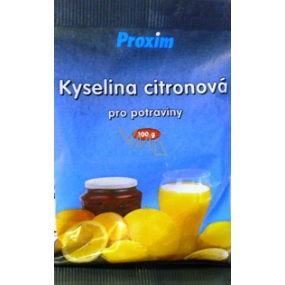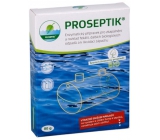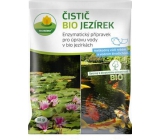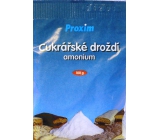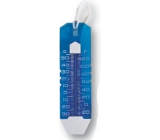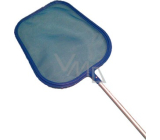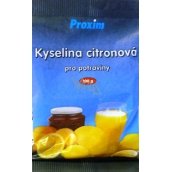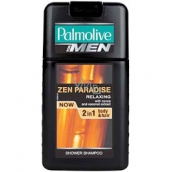- Washing
- Detergents
- Washing dishes
- Cleaning preparations
- Household appliances
- Rust and limescale
- Bathrooms and kitchens
- Universal cleaners
- Floors
- Toilet cleaner and disinfection
- Waste and septic tanks
- Windows and glass
- Furniture, dust
- Carpets and upholstery
- Cleaning wipes
- Electronics
- Garden furniture
- Gold, silver, metal
- Cleaning weapons
- Stone, tombstones
- Footwear and leather
- Sticker remover
- Cleaner of chimneys, fireplaces
- Asphalt spots
- Building material - disposal of algae, molds of mosses and bacteria
- Sprinkler defroster
- Disinfectant
- Air dehumidifiers
- Cleaning tools
- Ecological household
Citric acid food proven household product bag 100 ml
| Code: | 03692 |
| EAN: | 8594019360498 |
| Producer: | Proxim Ltd. |
| Brand: | Proxim (web) |
 | |
Kyselina Citronová se používá v nezbytném množství při zavařování a konzervaci ovoce a zeleniny, k výrobě džemů, marmelád, povidel a klevel.
- Při přípravě ovocných šťáv v množství max. 3 g / kg 100 % šťávy.
- Dále se používá k dochucování ovocných salátů či salátových zálivek kompotů a nápojů.
- Kyselinou Citronovou lze též odstraňovat vodní kámen nebo čistit skvrny od rzi apod.
Nalezneme ji hlavně v nealkoholických nápojích, džusech, víně, tucích, instantních nápojích, v marmeládě, kandovaném a mraženém ovoci, mražených mléčných výrobcích, v sýrových pomazánkách, majonéze, v salátovém dresingu a mnoha dalších potravinách. Kyselinu Citronovou nalezneme také v kosmetice, farmaceutických výrobcích a v chemické výrobě.
Ideální pomocník pro odstranění vodního kamene: večer aplikujete ráno máte čisto - stejný účinek jako ocet, ale nezapáchá! Do potravin jako okyselovadlo, konzervační látka.
Citric Acid has many uses. In food, it is mainly due to its ability to regulate acidity and alkalinity. It also prevents the growth of bacteria, yeasts and moulds, which is why it is also used as a preservative. In fats and oils, it prevents rancidity and undesirable discoloration and acts here as an andioxidant.
1. When preserving fruit and Vegetables.
2. For flavouring fruit salads, compotes and salad dressings.
3. To support the gelling process in the production of jams, marmalades and jellies.
4. For flavouring drinks.
5. For descaling, e.g. in coffee machines, etc.
6. Prevents the growth of bacteria and mould
7. Antioxidant
Dissolve one teaspoon of Citric Acid in 1 litre of Water and immerse the peeled fruit to be preserved in this solution. In this way we can conveniently treat the fruit before subsequent preservation, e.g. by drying or heating.
Citric Acid can also be used for descaling, e.g. in kettles, coffee makers.
it is a weak acid from the carboxylic group. It occurs naturally in citrus fruits, especially Lemons, limes, grapefruit, Oranges and, to a lesser extent, other fruits and Vegetables.
Citric Acid monohydrate - food grade, E330
C3H4(OH).(COOH)3.H2O, CAS: 5949-29-1, EC: 201-069-1
Packed in PE bag.
Production
There are several methods of production. Citric Acid can be obtained naturally from citrus juice by fermenting raw sugar.However, common industrial production uses the fungal culture Aspergillus niger and Sucrose (mainly molasses, hydrolysed corn Starch or other cheaply obtained sugars). The addition of Calcium hydroxide (known as slaked lime) produces a salt from which sulphuric acid yields the final Citric Acid.Annual global production is estimated at 1.7 million tonnes, more than half of which is produced in China.
In general, Citric Acid is considered a safe substance and can be added in necessary amounts to all foods, including baby food. In the USA it is included in the GRAS list of substances.Excessive use of Citric Acid can damage tooth enamel. For example, by eating Lemons themselves. Like all acids, it will cause an irritant reaction on contact with the eye, and in higher concentrations and quantities can cause blindness. However, the amount in food is far below this limit.
Thanks to alarmist chain emails, Citric Acid has been attributed with many bad properties, especially carcinogenicity. This is indeed a misinformation, which was caused by a wrong translation of the word Krebs. This word in German really means cancer, but in conjunction with Citric Acid it refers to the scientist Hans Krebs, who won the Nobel Prize in 1953 for discovering the so-called "cancer".Citrate cycle, sometimes also called the Krebs cycle.
This item has not been discussed yet. If you want to be first, click on the button Add a contribution
Kyselina Citronová se používá v nezbytném množství při zavařování a konzervaci ovoce a zeleniny, k výrobě džemů, marmelád, povidel a klevel.
- Při přípravě ovocných šťáv v množství max. 3 g / kg 100 % šťávy.
- Dále se používá k dochucování ovocných salátů či salátových zálivek kompotů a nápojů.
- Kyselinou Citronovou lze též odstraňovat vodní kámen nebo čistit skvrny od rzi apod.
Nalezneme ji hlavně v nealkoholických nápojích, džusech, víně, tucích, instantních nápojích, v marmeládě, kandovaném a mraženém ovoci, mražených mléčných výrobcích, v sýrových pomazánkách, majonéze, v salátovém dresingu a mnoha dalších potravinách. Kyselinu Citronovou nalezneme také v kosmetice, farmaceutických výrobcích a v chemické výrobě.
Ideální pomocník pro odstranění vodního kamene: večer aplikujete ráno máte čisto - stejný účinek jako ocet, ale nezapáchá! Do potravin jako okyselovadlo, konzervační látka.
Citric Acid has many uses. In food, it is mainly due to its ability to regulate acidity and alkalinity. It also prevents the growth of bacteria, yeasts and moulds, which is why it is also used as a preservative. In fats and oils, it prevents rancidity and undesirable discoloration and acts here as an andioxidant.
1. When preserving fruit and Vegetables.
2. For flavouring fruit salads, compotes and salad dressings.
3. To support the gelling process in the production of jams, marmalades and jellies.
4. For flavouring drinks.
5. For descaling, e.g. in coffee machines, etc.
6. Prevents the growth of bacteria and mould
7. Antioxidant
Dissolve one teaspoon of Citric Acid in 1 litre of Water and immerse the peeled fruit to be preserved in this solution. In this way we can conveniently treat the fruit before subsequent preservation, e.g. by drying or heating.
Citric Acid can also be used for descaling, e.g. in kettles, coffee makers.
it is a weak acid from the carboxylic group. It occurs naturally in citrus fruits, especially Lemons, limes, grapefruit, Oranges and, to a lesser extent, other fruits and Vegetables.
Citric Acid monohydrate - food grade, E330
C3H4(OH).(COOH)3.H2O, CAS: 5949-29-1, EC: 201-069-1
Packed in PE bag.
Production
There are several methods of production. Citric Acid can be obtained naturally from citrus juice by fermenting raw sugar.However, common industrial production uses the fungal culture Aspergillus niger and Sucrose (mainly molasses, hydrolysed corn Starch or other cheaply obtained sugars). The addition of Calcium hydroxide (known as slaked lime) produces a salt from which sulphuric acid yields the final Citric Acid.Annual global production is estimated at 1.7 million tonnes, more than half of which is produced in China.
In general, Citric Acid is considered a safe substance and can be added in necessary amounts to all foods, including baby food. In the USA it is included in the GRAS list of substances.Excessive use of Citric Acid can damage tooth enamel. For example, by eating Lemons themselves. Like all acids, it will cause an irritant reaction on contact with the eye, and in higher concentrations and quantities can cause blindness. However, the amount in food is far below this limit.
Thanks to alarmist chain emails, Citric Acid has been attributed with many bad properties, especially carcinogenicity. This is indeed a misinformation, which was caused by a wrong translation of the word Krebs. This word in German really means cancer, but in conjunction with Citric Acid it refers to the scientist Hans Krebs, who won the Nobel Prize in 1953 for discovering the so-called "cancer".Citrate cycle, sometimes also called the Krebs cycle.
